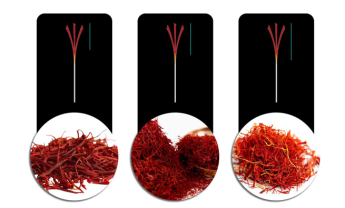Muscat: Within the GCC, Oman is likely to witness the highest growth at a compound annual growth (CAGR) rate of 4.6 per cent in terms of food consumption which is anticipated to grow from 3.2 million MT in 2018 to 4.0 million MT in 2023, a new report reveals.
Population and real gross domestic product (GDP) growth of 3.2 per cent and 2.5 per cent, respectively during the period will be a major factor driving the food consumption in the country, according to the GCC Food Industry Report published by Alpen Capital (ME) Limited, an investment banking advisory firm.
Tourism will also play a key role in defining the upcoming food demand. It is expected that the tourist arrivals in Oman is likely to grow at a CAGR of 5.5 per cent between 2018 and 2023 to reach 3.3 million.
The government is initiating several growth intensive steps to promote tourism such as the introduction of the e-visa system, expansion and transformation of Muscat International Airport and establishing attractions by encouraging public-private partnerships.
The recent commencement of production at the Khazzan tight gas field will be a boost to gas output and in turn government revenues, over the coming years. This should result in a substantial uptick to the real GDP growth and thus improve the per capita income thereby lifting all sectors including food, the report said.
Among all food categories, dairy consumption is likely to grow fastest at 5.6 per cent from 2018 to 2023 followed by cereals at 5.5 per cent. Growth in dairy consumption can be attributed to changing food preferences of the people towards more healthy food. Rice and wheat, which forms the core ingredients of a staple diet will drive the demand for cereals.
To meet the growing demand for dairy, Oman Food Investment Holding Company’s (OFIC) flagship project, Mazoon Dairy is set to commence operation of its $260 million facilities in the third quarter of 2019. In the initial stages, the facility is targeting to produce 350,000 litres of milk per day, which will be scaled up to one million litres on a daily basis within ten years.
Being the largest fish producers and exporters in the region, the Omani government is using several technology initiatives to boost local production which is likely to increase the consumption, thus contributing to the 5.4 per cent annualised consumption growth in the ‘Others’ category.
According to Alpen Capital report, food consumption in the GCC is expected to grow at a CAGR of 3.3 per cent from an estimated 51.5 million MT in 2018 to 60.7 million MT in 2023. Increase in population, growing tourism, high per capita income and a sustained economic recovery are likely to drive the growth of the food sector in the region.
Being the staple food of the region, cereals are expected to remain the most consumed food category with a share of 48.2 per cent by 2023. Increasing demand for milk products will drive the growth of the Dairy sector and consumption of egg, fish, potatoes and fats & oil will contribute to the growth of the “Others” category. Consumption of healthy and organic food is likely to increase with growing awareness. However, the respective share of most food categories in the overall consumption is anticipated to remain broadly unchanged.
“We anticipate the GCC food sector will continue to grow at a steady pace owing to factors such as growing population, higher per capita income, a vibrant tourism market and changing dietary habits and preferences,” says Sameena Ahmad, Managing Director, Alpen Capital (ME) Limited.
“Upcoming MEGA events like EXPO 2020 and the FIFA World Cup 2022 are expected to further aid the growth of food consumption in the region. The food services industry continues to evolve with increasing penetration of food delivery channels and rising number of tech-savvy millennials in the region,” she added.
“Over the next five years, we expect to witness steady growth in the GCC food sector. Along with strong macro-economic variables, factors like changing demographics, an increase in the number of working couples and the growing influence of global culture are also supplementing the growth of the food sector. Rising incidences of lifestyle-related diseases would continue to drive the demand for organic and healthy food items,” says Krishna Dhanak, Executive Director, Alpen Capital.
“Despite regional and economic challenges, we saw significant M&A activity take place in the sector during the past two years. Inherent demand for self-sustenance coupled with government initiatives and investments aimed at augmenting domestic productivity and food security makes the region attractive for investors,” he added.
The country-wise food consumption share in the GCC is projected to largely remain unchanged through 2023. Saudi Arabia and the UAE are expected to remain the largest food consuming nations with their combined share of around 81 per cent by 2023. Oman is expected to experience the fastest annualised growth at a CAGR of 4.6 per cent.
The food consumption for the UAE and Saudi Arabia is estimated to reach 10.3 million MT and 39.0 million MT by 2023, respectively. The forecasted growth rates largely reflect the population and GDP projections for the countries.
Source: timesofoman.com






